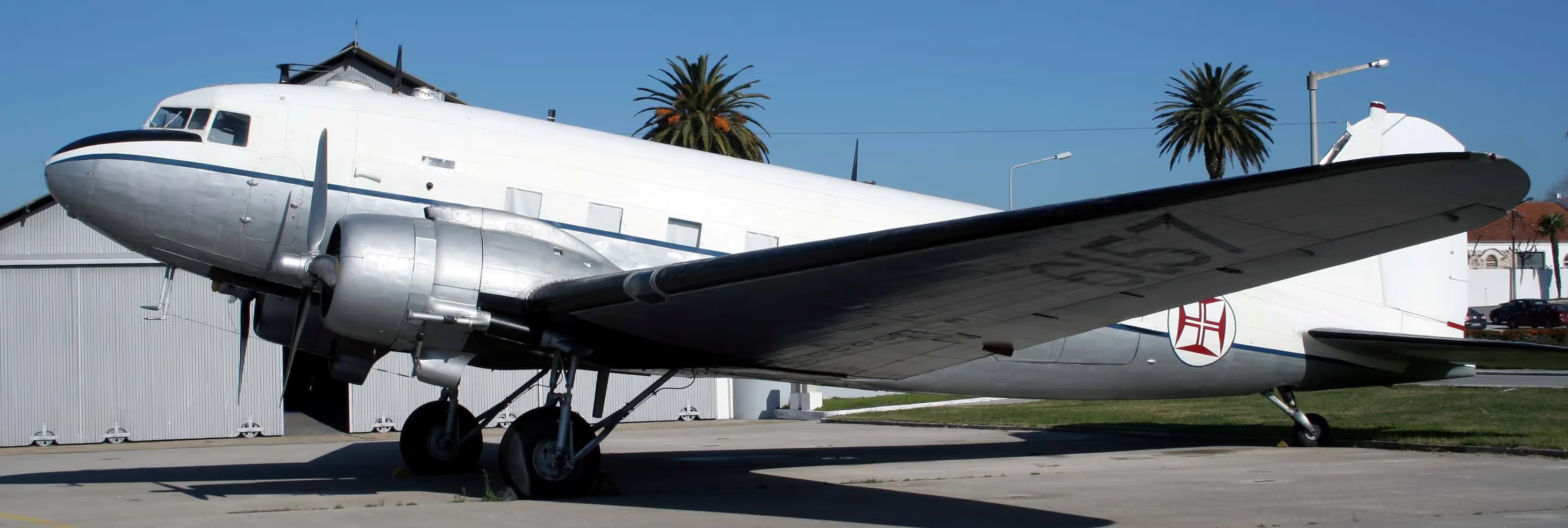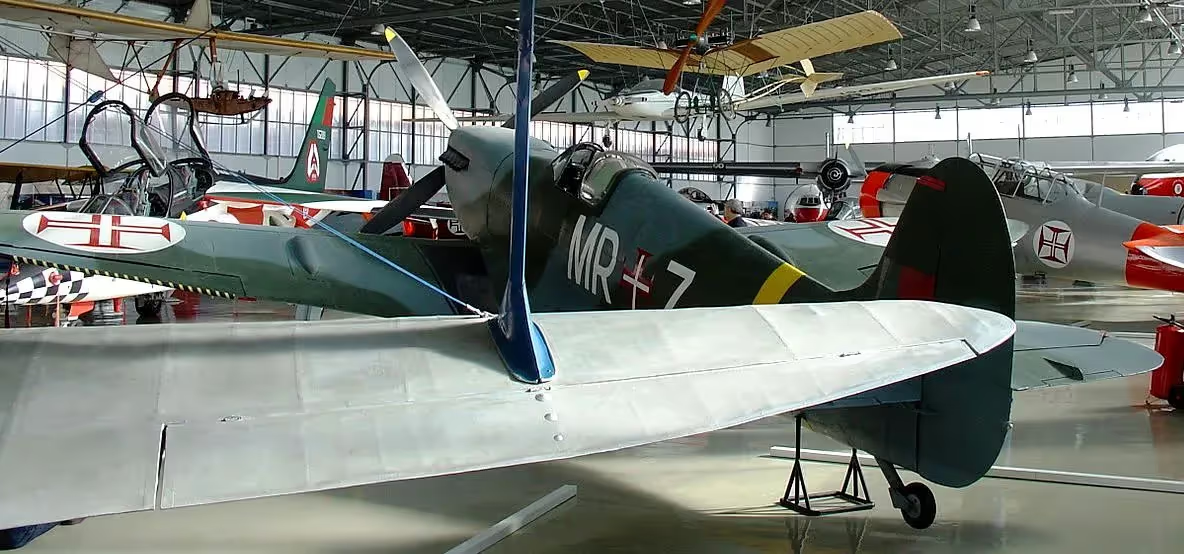Portugal: Warplanes of the Second World War preserved
Warplanes of the Second World War preserved in Portugal
The aim of this website is to locate, identify and document Warplanes from the Second World War preserved in Portugal. Many contributors have assisted in the hunt for these aircraft to provide and update the data on this website. Photos are as credited. Any errors found here are by the author, and any additions, corrections or amendments to this list of Warplane Survivors of the Second World War in Portugal would be most welcome and may be e-mailed to the author at [email protected].
Aviões de guerra da Segunda Guerra Mundial preservados em Portugal
O objetivo deste site é localizar, identificar e documentar aviões de guerra da Segunda Guerra Mundial preservados em Portugal. Muitos colaboradores ajudaram na busca por essas aeronaves para fornecer e atualizar os dados neste site. As fotos são creditadas. Quaisquer erros encontrados aqui são do autor e quaisquer acréscimos, correções ou alterações a esta lista de Sobreviventes de Aviões de Guerra da Segunda Guerra Mundial em Portugal serão bem-vindos e podem ser enviados por e-mail ao autor em [email protected]..
Aeronáutica Militar
The Portuguese Army's Aeronáutica Militar was the first military aviation service created in Portugal and much of the Portuguese aviation origins date back to it.
Museu do Ar, Portuguese Air Museum, located at Sintra Air Base with additional spaces at Ovar and Alverca.
Sintra
Avro 631 Cadet.

(Pedro Aragão Photo)

(Ricardo Reis Photo)
Beechcraft AT-11 Kansan (Serial No. 2504).

(Pedro Aragão Photo)
de Havilland DH-82A Tiger Moth (Serial No. 102).

(Ricardo Reis Photo)
de Havilland DH-82A Tiger Moth (Serial No. 111).

(Soares da Silva Photo)
de Havilland DH89A Dragon Rapide (Serial No. 2307).

(Soares da Silva Photo)

(Pedro Aragão Photo)
Douglas C-47A Dakota (Serial No. 6157).
Douglas C-47A Dakota (Serial No. CS-TDA).

(Ricardo Reis Photo)
Junkers Ju 52/3m g3e (Wk. Nr. 6304).

(Garsd Photo)
North American T-6 Texans serving with the Portugues Air Force in the early 1960s.

(Soares da Silva Photo)
North American AT-16 Harvard Mk. III (Serial No. 1747).

(Ricardo Reis Photo)
North American T-6G Texan (Serial No. 1737).

(Soares da Silva Photo)
Piper PA-18 (L-21) Super Cub.



(Ricardo Reis Photos)
Supermarine Spitfire HF Mk. IXc (Serial No. ML255), coded MR-Z. Delivered to the South African Air Force in 1948. After being damaged in a collision at AFB Ysterplaat, it ended up derelict in Snake Valley, Pretoria, until it was recovered and restored to static display for the SAAF Museum. It was later transferred to the Museu do Ar, at Sintra in Portugal.
Alverca

(Ricardo Reis Photo)
Fairey IIID Mk. 2 (Serial No. 17), F-402, replica.
Grumman G-44 Widgeon (Serial No. 129).

(Ricardo Reis Photo)
Hawker Hurricane Mk. IIIb, replica. This aircraft bears the Squadron insignia moto: "Agora canto eu" (Now it's my turn).
Hawker Hurricane Mk. IIc (Serial No. 591), RV-J.
North American T-6J Texan (Serial No. 1769).
Museu de Marinha, Naval Museum, Lisbon



(Author Photos)
Fairey IIID "Santa Cruz". This the only complete and intact Fairey III in existence. Portuguese naval aviators Gago Coutinho and Sacadura Cabral flew “Santa Cruz“ in the completion of the first air crossing of the South Atlantic from Lisbon, Portugal to Rio de Janeiro, Brazil in June 1922 to mark the centennial of Brazil’s independence.
Gago Coutinho and Sacadura Cabral took off from the waters near the famous Torre de Belém in Lisbon on 30 March 1922 and headed for Brazil. Due to some incidents on the way, they actually used three Fairey IIID aircraft to cover the distance of 8,383 kilometres between 30 March and 17June 1922. The first aircraft, "Lusitânia", was lost upon landing on heavy seas near Saint Peter and Saint Paul Archipelago in Brazilian waters on 17 April 1922. The second aircraft "Pátria" was taken by sea to the same area to recommence the journey but was lost on 11 May during an emergency ditching in the ocean. “Santa Cruz“ was shipped out to the same area (to the waters off Fernando Noronha) and the flight recommenced on 5 June 1922 with Coutinho and Cabralto finally arriving safely aboard “Santa Cruz” in Rio de Janeiro on 17 June 1922. The journey had taken 79 days but the crew actually only flew 62 hours and 26 minutes to complete the crossing.



(Author Photos)
Fairey IIID replica, on display near the spot in Belém where the original "Lusitânia" took off in 1922. Monumento Comemorativo da Iª Travessia Aérea do Atlântico Sul.



(Author Photos)
Grumman G-44 Widgeon (Serial No. 128).
Second World War era aircraft flown by the Portuguese Army's Aeronáutica Militar include:
Airspeed Oxford.
Avro 631 Cadet.
Avro 626 Tutor.
Avro Anson T.I.
Bell P-400 Airacobra.
Bell P-39L Airacobra.
Boeing SB-17G Flying Fortress.
Breda Ba.65Bis.
Bristol Blenheim Mk. IV and V.
Caproni Ca.100 Caproncino.
Caproni Ca.113 Farfalla.
Consolidated B-24/PB4Y-1 Liberator.
Curtiss 75A-4 Mohawk.
de havilland Hornet Moth.
de Havilland DH.82 A Tiger Moth.
de Havilland DH.84 Dragon.
de Havilland DH.89 Dragon Rapide.
Douglas C-47 Dakota.
Douglas C-54 Skymaster.
Dornier Wal.
Gloster Gladiator.
Hawker Fury Mk. I.
Hawker Hind.
Hawker Hurricane Mk. IIB and IIC.
Junkers Ju 52.
Junkers Ju 52/3 mge.
Junkers Ju 86K-7.
Lockheed Hudson Mk. III and VI.
Miles Master Mk. II and III.
Miles Martinet T.T.I.
Miles magister Mk. I.
North American AT-6A, AT-6B, AT-6C and AT-6G Texan.
Piper PA-18 (L-21) Super Cub.
Potez 25 A.2.
Supermarine Spitfire Mk. I.
Supermarine DSpitfire Mk. VB.
Vickers Valparaiso Mk. III.
Vickers Wellington Mk. X.
Westland Lysander Mk. IIIA.
Second World War era aircraft flown by the the Portuguese Navy's Aviação Naval (Naval Aviation) include:
Airspeed Oxford.
Beechcraft D-18S Expeditor.
Beechcraft AT-11 Kansan.
Bristol Blenheim Mk. IVF.
Bristol Beaufighter.
Curtiss SB2C-4 and SB2C-5 Helldiver.
de havilland DH.60HG Gipsy Moth.
de Havilland DH.82A Tiger Moth.
Fairey Mk. IIID Mk. 2.
Fleet 10B.
Miles Martinet T.T.I.
North American SNJ-4.
The Portuguese Air Force, Força Aérea Portuguesa (FAP) was founded in 1952 as the result of the amalgamate of the Aeronáutica Militar and Aviação Naval . With the merger many aircraft were transferred from these earlier aviation services to the Air Force, having been in service before 1952. Aircraft of the Second World War era added to the FAP inventory include:
Douglas B-26B and C Invader.
Republic F-47D Thunderbolt.
Lockheed PV-2C and D Harpoon.
North American Harvard Mk. IIA, III and IV.





